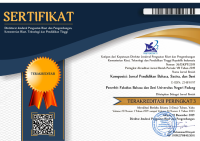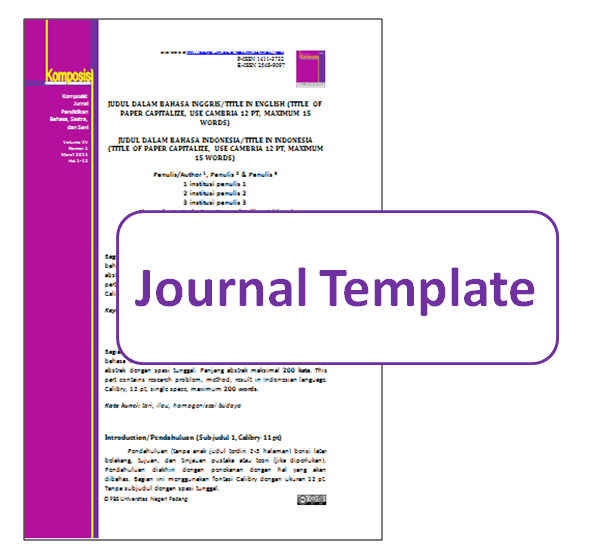LIBASUTTAQWA IN THE POEM OF SIDI DJAMADI: A HERMENEUTIC STUDY OF PAUL RICOEUR
 ),
), (1) Universitas Ahmad Dahlan
(2) Universitas Ahmad Dahlan
 Corresponding Author
Corresponding Author
Copyright (c) 2019 Komposisi: Jurnal Pendidikan Bahasa, Sastra, dan Seni
DOI : https://doi.org/10.24036/komposisi.v20i2.106953
Full Text:
 Language : id
Language : id
Abstract
Keywords
References
Fang, L. Y. (2011). Sejarah Kesusastraan Melayu Klasik. Jakarta: Yayasan Obor Indonesia.
Fitri, W. (2014). KekhasanHermeneutika Paul Ricouer. Tajdid, l7(2), 187–211.
Habibah, S. (2014). Sopan Santun Berpakaian Dalam Islam. Jurnal Pesona Dasar, 2(3), 65–78.
Hooykass, C. T. R. A. g. l. D. B. (1952). Penjedar Sastera. Jakarta: J.B. Wolters.
Indraningsih. (2011). Hermeneutika Paul Ricoeur Dan Penerapannya Pada Pemaknaan Simbol Dalam Roman “Rafilus” Karya Budi Darma. Jurnal Filsafat, 21(2), 118–133. https://doi.org/10.22146/jf.3112
Megawati, E. (2018). Jurnal Fashion Sebagai Komunikasi dan Pencitraan - EkaMegawati.pdf. Jurnal Citra, 6(1), 26–39.
Noerhadi, I. C. (2012). Busana Jawa Kuno. Jakarta: Komunitas Bambu.
Pattipeilohy, S. Y. E., & Wijaya, Y. (2018). Kajian Teologi Moral Terhadap Fashion Sebagai Isu Budaya Populer. Jurnal Kawistara, 8(1), 91. https://doi.org/10.22146/kawistara.30412
Saidi, A. (2008). Hermeneutika, Sebuah Cara Untuk Memahami Teks. Jurnal Sosioteknologi, 7(13), 376-382–382.
Sutopo, H. . (2002). Metodologi Penelitian Kualitatif. Surakarta: Sebelas Maret University Press.
Tim Penyusun. (2017). Kamus Besar Bahasa Indonesia. https://kbbi.kemdikbud.go.id/.
 Article Metrics
Article Metrics
 Abstract Views : 278 times
Abstract Views : 278 times
 PDF Downloaded : 44 times
PDF Downloaded : 44 times
Refbacks
- There are currently no refbacks.
Copyright (c) 2019 Komposisi: Jurnal Pendidikan Bahasa, Sastra, dan Seni

This work is licensed under a Creative Commons Attribution-NonCommercial 4.0 International License.











